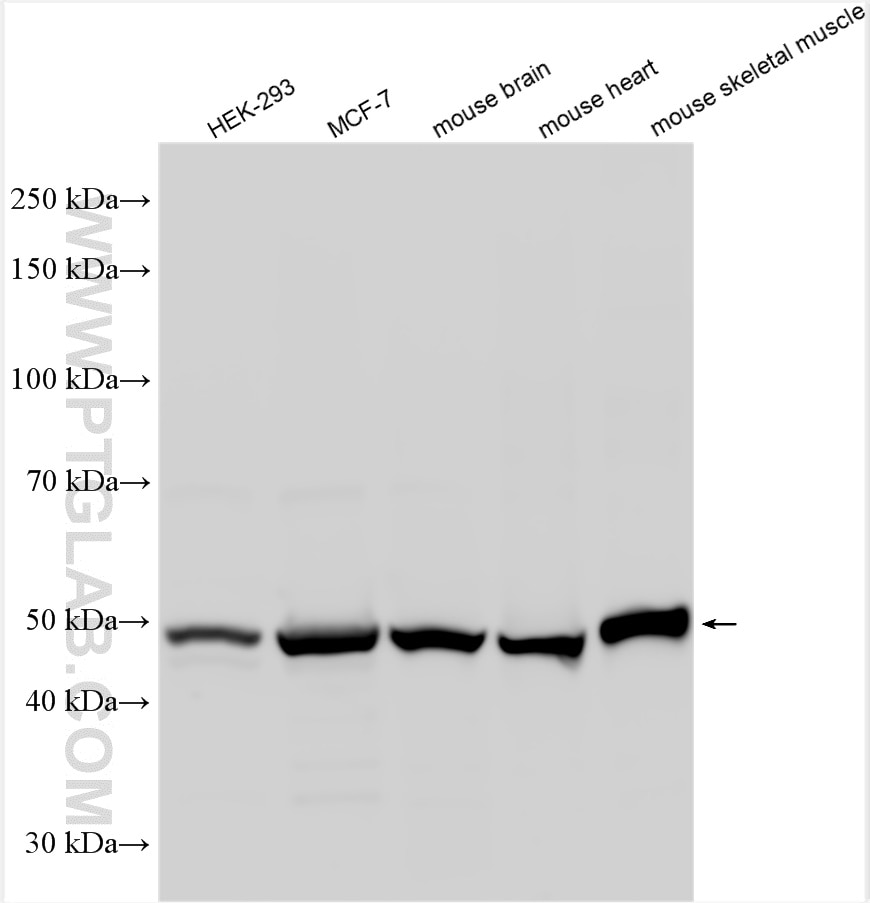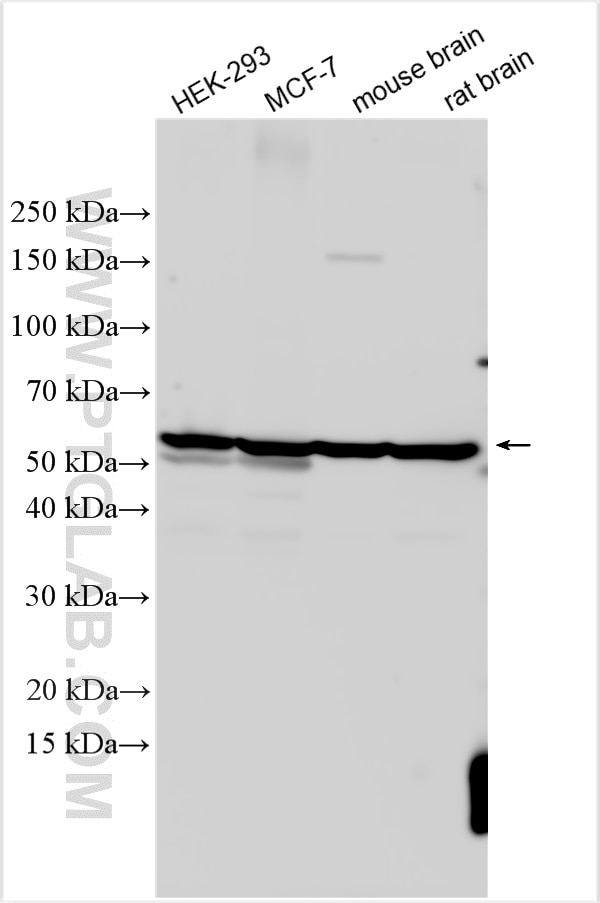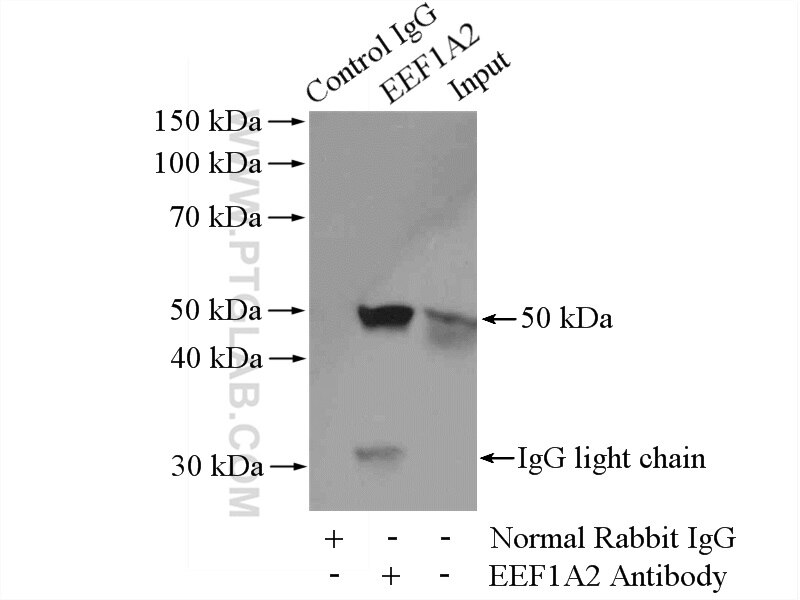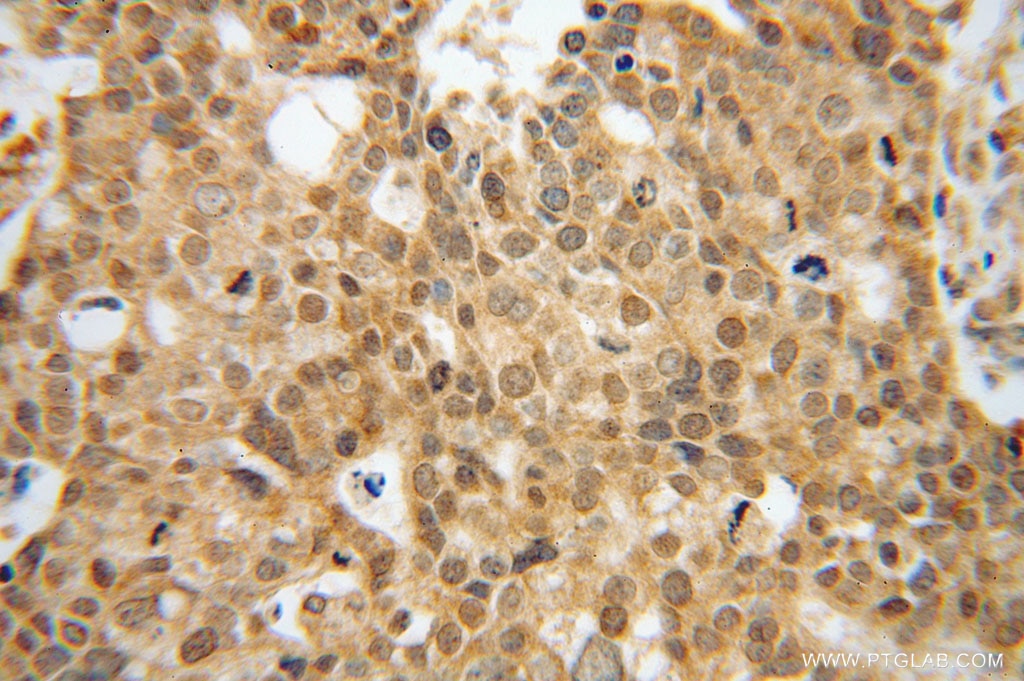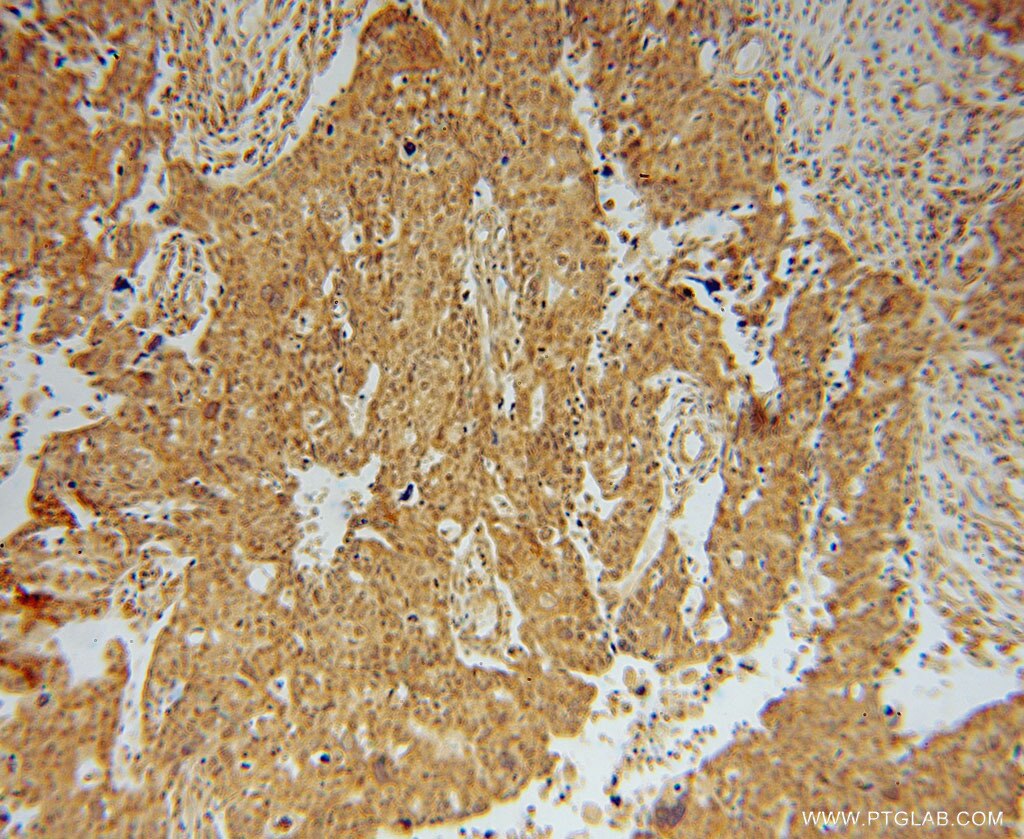- Featured Product
- KD/KO Validated
EEF1A2 Polyklonaler Antikörper
EEF1A2 Polyklonal Antikörper für IHC, IP, WB, ELISA
Wirt / Isotyp
Kaninchen / IgG
Getestete Reaktivität
human, Maus, Ratte und mehr (2)
Anwendung
WB, RIP, IP, IHC, IF, ELISA
Konjugation
Unkonjugiert
Kat-Nr. : 16091-1-AP
Synonyme
Galerie der Validierungsdaten
Geprüfte Anwendungen
| Erfolgreiche Detektion in WB | HEK-293-Zellen, Mausherzgewebe, Maushirngewebe, Maus-Skelettmuskelgewebe, MCF-7-Zellen, Rattenhirngewebe |
| Erfolgreiche IP | Maushirngewebe |
| Erfolgreiche Detektion in IHC | humanes Ovarialkarzinomgewebe Hinweis: Antigendemaskierung mit TE-Puffer pH 9,0 empfohlen. (*) Wahlweise kann die Antigendemaskierung auch mit Citratpuffer pH 6,0 erfolgen. |
Empfohlene Verdünnung
| Anwendung | Verdünnung |
|---|---|
| Western Blot (WB) | WB : 1:2000-1:10000 |
| Immunpräzipitation (IP) | IP : 0.5-4.0 ug for 1.0-3.0 mg of total protein lysate |
| Immunhistochemie (IHC) | IHC : 1:20-1:200 |
| It is recommended that this reagent should be titrated in each testing system to obtain optimal results. | |
| Sample-dependent, check data in validation data gallery | |
Veröffentlichte Anwendungen
| KD/KO | See 2 publications below |
| WB | See 14 publications below |
| IHC | See 4 publications below |
| IF | See 6 publications below |
| IP | See 1 publications below |
| RIP | See 1 publications below |
Produktinformation
16091-1-AP bindet in WB, RIP, IP, IHC, IF, ELISA EEF1A2 und zeigt Reaktivität mit human, Maus, Ratten
| Getestete Reaktivität | human, Maus, Ratte |
| In Publikationen genannte Reaktivität | human, Auster, Maus, Ratte, Zebrafisch |
| Wirt / Isotyp | Kaninchen / IgG |
| Klonalität | Polyklonal |
| Typ | Antikörper |
| Immunogen | EEF1A2 fusion protein Ag6875 |
| Vollständiger Name | eukaryotic translation elongation factor 1 alpha 2 |
| Berechnetes Molekulargewicht | 50 kDa |
| Beobachtetes Molekulargewicht | 50-53 kDa |
| GenBank-Zugangsnummer | BC000432 |
| Gene symbol | EEF1A2 |
| Gene ID (NCBI) | 1917 |
| Konjugation | Unkonjugiert |
| Form | Liquid |
| Reinigungsmethode | Antigen-Affinitätsreinigung |
| Lagerungspuffer | PBS mit 0.02% Natriumazid und 50% Glycerin pH 7.3. |
| Lagerungsbedingungen | Bei -20°C lagern. Nach dem Versand ein Jahr lang stabil Aliquotieren ist bei -20oC Lagerung nicht notwendig. 20ul Größen enthalten 0,1% BSA. |
Hintergrundinformationen
EEF1A2, also named as EEF1AL, STN and Statin-S1, belongs to the GTP-binding elongation factor family and EF-Tu/EF-1A subfamily. It promotes the GTP-dependent binding of aminoacyl-tRNA to the A-site of ribosomes during protein biosynthesis. EEF1A2 may be critical in the development of ovarian cancer. The MW of EEF1A2 is 50-53kd. This antibody can recognize both EEF1A1 and EEF1A2.
Protokolle
| Produktspezifische Protokolle | |
|---|---|
| WB protocol for EEF1A2 antibody 16091-1-AP | Protokoll herunterladen |
| IHC protocol for EEF1A2 antibody 16091-1-AP | Protokoll herunterladen |
| IP protocol for EEF1A2 antibody 16091-1-AP | Protokoll herunterladen |
| Standard-Protokolle | |
|---|---|
| Klicken Sie hier, um unsere Standardprotokolle anzuzeigen |
Publikationen
| Species | Application | Title |
|---|---|---|
Mol Oncol SNX16 activates c-Myc signaling by inhibiting ubiquitin-mediated proteasomal degradation of eEF1A2 in colorectal cancer development. | ||
Pharmacol Res Nannocystin ax, an eEF1A inhibitor, induces G1 cell cycle arrest and caspase-independent apoptosis through cyclin D1 downregulation in colon cancer in vivo. | ||
Sci Rep Biallelic mutations in the gene encoding eEF1A2 cause seizures and sudden death in F0 mice.
| ||
Br J Cancer Dissecting the expression of EEF1A1/2 genes in human prostate cancer cells: the potential of EEF1A2 as a hallmark for prostate transformation and progression. | ||
Hum Mol Genet Recapitulation of the EEF1A2 D252H neurodevelopmental disorder-causing missense mutation in mice reveals a toxic gain of function. |
Rezensionen
The reviews below have been submitted by verified Proteintech customers who received an incentive forproviding their feedback.
FH WEI (Verified Customer) (01-17-2020) | KO validated by KO mice, very good for western blot and immunofluorescence
|
